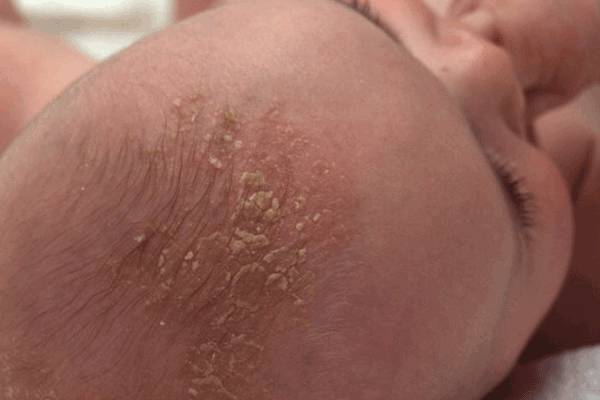
Interview with Dr. Subash Rao: All you need to know about Cradle cap
20 Nov 2015 | 3 min Read
Dr.Subash Rao
Author | 10 Articles
What is Cradle cap?
Cradle cap is dryness, flaking and scaling of the skin over the scalp. It is also called as seborrheic dermatitis in medical terms. Cradle cap is a harmless condition. It’s usually seen in the first few months of life and clears up on its own in most cases by about 6 to 12 months – although in some children it may last longer.
Cause: Though the exact cause of cradle cap isn’t known, it is said that the hormones that pass from the mother to the baby before birth cause an abnormal production of oil (sebum) in the oil glands and hair follicles.
Another factor may be a yeast (fungus) called malassezia (mal-uh-SEE-zhuh) that grows in the sebum along with bacteria. Cradle cap isn’t contagious and probably may not bother the baby.
Symptoms of cradle cap:
Common signs of cradle cap include:
• Patchy scaling or thick crusts on the scalp.
• Skin flakes
• Sometimes redness
• Greasy skin covered with flaky white or yellow scales
• Scales may also be present on the ears, eyelids, nose and groin.
Cradle cap is sometimes confused with another skin condition called infantile eczema. One major difference between these conditions, is that eczema usually causes significant itching whereas itching is rarely seen in cradle cap.
Treatment of cradle cap: Cradle cap usually doesn’t require any medication. It clears up on its own within a few weeks to months. Some simple measures are suggested to cure cradle cap, such as:
Washing your baby’s hair once a day with mild baby shampoo and brush the scalp lightly with a soft brush to loosen the scales. If the scales don’t come off easily, a gentle oil massage may help to loosen the dry flakes.
• Rub a small amount of a pure, natural oil – such as almond or olive oil – on your baby’s scalp and leave it on for about 15 minutes. Then gently comb out the flakes with a fine-tooth comb or brush them out with a soft brush. Finally wash the baby’s scalp with a gentle baby shampoo. Leave the shampoo on for a few minutes before rinsing, to help remove the oil as it may clog the pores and cause the flakes to stick.
• Sometimes doctor may suggest an anti-dandruff shampoo or a cortisone cream may be prescribed if the scalp is inflamed, and anti-fungal creams too if there are signs of fungal infection.
• However do not use over-the-counter cortisone or anti fungal creams without consulting your doctor because some of these products can be toxic when absorbed through a baby’s skin.
Read on to learn about Hand, Foot and Mouth disease in children.
Read on to learn about Dengue in children.
To consult Dr. Rao in person, find his details here.
A


Suggestions offered by doctors on BabyChakra are of advisory nature i.e., for educational and informational purposes only. Content posted on, created for, or compiled by BabyChakra is not intended or designed to replace your doctor's independent judgment about any symptom, condition, or the appropriateness or risks of a procedure or treatment for a given person.
